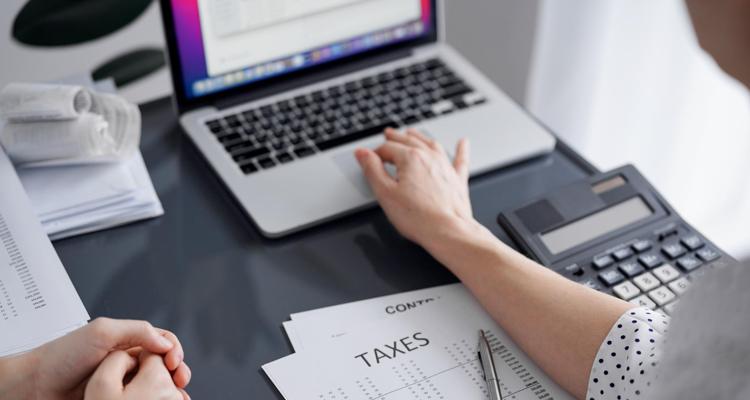
Published: February 4, 2025
Last Updated: February 4, 2025
The Canadian federal government is moving forward with plans to make automatic tax filing more widely available to Canadians, including those who are “middle class.”
In the fall economic statement released on December 16, 2024, the Canadian Federal Government announced several measures to make it easier for Canadian taxpayers to file your annual returns, building on efforts that are already underway.
“It is time for Canada to accelerate modernization of how Canadian taxpayers file their taxes and make needlessly complicated and costly tax filing services a thing of the past,” the fall economic statement states.
“Many countries have already pursued full-scale automatic tax filing, and the federal government is launching the second phase of its work to move Canada towards broad-based automatic tax filing.”
Among the measures announced is legislation to allow the Canada Revenue Agency to automatically file a tax return on behalf of some lower-income Canadian taxpayers, starting as early as the 2025 tax year.
As part of a national pilot program, first proposed in the 2023 federal budget, 500,000 lower-income Canadian taxpayers who had never filed taxes or Canadian Taxpayers who did file taxes in the past but have not filed taxes for the past one (1) or more years are invited in July of 2024 to file their 2023 tax returns by phone, online or by mail using the Canada Revenue Agency’s SimpleFile services.
The pilot was launched to help low-income Canadians who have never filed a tax return or who have a gap in their filing history.
In February 2024, CRA also opened up its SimpleFile by Phone service from 500,000 taxpayers to now 1.5 million eligible Canadians who have “a lower income or a fixed income and who are in a simple tax situation that remains unchanged from year to year” and who have filed their taxes in recent years.
The federal government is now looking into expanding automatic tax filing to “middle-class Canadians with simple tax situations.”
“This could include, for example, non-filers or those with a gap in their filing history and who do not claim most deductions and credits,” the fall economic statement said. “It could also include a modest-income family who does not have the funds for a paid tax filing service.”
The fall fiscal update also included a proposal to amend the Canada Revenue Agency Act that would include simplifying and automating tax filing as among the responsibilities of the National Revenue Minister.
In addition, the Canadian Federal Government is exploring options to make free online tax software more accessible to Canadians.
How Does Automatic Tax Filing Work?
Three options for automatic tax filing (SimpleFile) were made available to Canadians in July 2024 via:
- phone
- digital
- paper
Using the SimpleFile service, tax returns can be easily filed for free, in a secure way, and will take as little as 10 minutes, the CRA claims.
Eligible individuals using the phone or digital option were asked a series of simple questions and needed to confirm their personal information.
For tax filers phoning in and who created a personal identification number, any refund that they were eligible for would be available at the end of the call.
If no PIN is created, a Notice of Assessment will be sent either via mail or to the person’s CRA account after their return has been processed.
Among the low-income Canadian taxpayers who were invited this year, 93 percent filed their tax return, as of Nov. 3, 2024, and are receiving $3 billion in benefits and credit payments, including:
- More than $1.4 billion in Canada Child Benefit payments;
- A little over $115 million in Canada Workers’ Benefit payments;
- About $490 million in GST Credit payments;
- Nearly $451 million in Canada Carbon Rebate payments; and
- Over $535 million in provincial and territorial benefits issued by the CRA.
The CRA also offers a secure digital service called “Auto-fill my return” that allows individuals and authorized representatives using certified software to automatically fill in parts of their income tax and benefit return forms.
The national pilot program is expected to continue next year. The CRA is also planning to increase its invites for the SimpleFile (formerly called File My Return) by Phone service to two million Canadians in total so they can file their taxes automatically for the 2025 season.
The federal government estimates that almost 20 percent of Canadians with an income below $20,000 do not file a tax return. Moreover, as per a 2020 report co-authored by Carleton University professors estimated that between 10% to 12% of Canadians do not file their taxes.
The Parliamentary Budget Officer (PBO) said in a report published in June 2024 that rolling out the automatic tax filing system would mean Canadians receive more than a billion dollars each year in currently unclaimed benefits from not filing their tax returns.
Canadian Taxpayers Need Broad-Based Tax Reform – Recommendation to the Canadian Federal Government from an Expert Canadian Tax Lawyer
Many other countries have already pursued full-scale automatic tax filing. In nearly 30 countries, the tax authorities provide residents with a prefilled tax return, which includes a preliminary tax liability assessment. Taxpayers can then review and modify the information on their tax return, if needed, before submitting it.
Countries such as Sweden and New Zealand will deem the preliminary tax liability assessment accepted if the taxpayer doesn’t submit any modifications, while Denmark and the United Kingdom require taxpayers to confirm their prepopulated returns to complete the filing process. Even the Internal Revenue Service (IRS) in the United States of America introduced the Direct File service this year, allowing eligible individuals in 12 out of 50 states to file their tax returns electronically using a free platform provided by the IRS.
Given the wide availability of automatic tax filing in other developed countries, it is crucial that the Canada Revenue Agency and Canadian Federal Government follow suit and start expanding automatic tax filing to middle-class Canadians with “simple tax situations.”
Of course, all of this automatic filing doesn’t actually address the larger problem of our complicated tax system, which can only be solved by broad-based tax reform. Our personal tax system, with its myriad deductions and obscure and seldom-claimed boutique tax credits such as the Volunteer Firefighter’s Amount, Digital News Subscription Amount, or Eligible Educator School Supply tax credit, needlessly complicate the tax filing process and require taxpayers to assemble and maintain detailed receipts to claim a credit, which is hardly worth the time administering.
For example, only 82,000 teachers took advantage of the school supply credit in 2021. It was worth a maximum of $250, and there is a prescribed list in the Income Tax Regulations (Part XCVI, Regulation 9600) of durable goods that qualify for this credit, and you’ve got to hang on to your receipts in case the CRA decides to tax audit your claim.
Expert Canadian tax lawyers call on the Canadian Federal Government to start the tax simplification process by scrapping most of our boutique credits and replacing them with a combination of a higher basic personal amount (BPA) and lowering the tax rate for the first federal income bracket (for income under $55,867 in 2024).
This could be done by calculating the average tax benefit each Canadian gets from the various boutique tax credits being eliminated and then tweaking the BPA and lowering the bracket rate to achieve a revenue-neutral result.
Pro Tax Tip from an Expert Canadian Tax Lawyer
Although the Canada Revenue Agency is responsible for enforcing and administering the Income Tax Act and is now making automatic tax return a reality for some Canadian taxpayers, in the end, it is the Canadian taxpayer’s responsibility to make sure that their tax returns have been accurately and correctly filed. When in doubt about taxes, contact an expert Canadian Tax Lawyer for advice.
Frequently Asked Questions (FAQ)
I do not qualify for SimpleFile. How can I file my taxes for free?
There are a lot of commercially available Canada Revenue Agency (CRA) certified tax software packages, such as TurboTax and Wealthsimple, that offer free tax filing for “simple tax returns.”
Contact our expert Canadian Tax Lawyers for more information on free tax software packages for use.
What are the eligibility criteria for SimpleFile services?
To be eligible for the SimpleFile services, you must:
- Have an income under a certain threshold based on factors that include age, province of residence, and disability status
- Have income exclusively from the following sources:
- Benefits
- Old Age Security – T4A (OAS)
- Guaranteed Income Supplement / Net federal supplements – T4A (OAS)
- Canada or Quebec Pension Plan benefits (including disability benefits) – T4A(P)
- Employment and related income supports
- Employment income – T4
- Employment Insurance benefits – T4E
- Workers’ Compensation benefits – T5007
- Social assistance payments – T5007
- Canada Emergency benefits – T4A
- Investment Income
- Some Interest income – T5 (Box 13)
- Benefits
I am a resident of Quebec. Can I use SimpleFile?
For all options, if you’re a resident of Quebec, the services only complete the federal tax return. Quebec taxpayers will still need to complete and submit a Quebec provincial tax return with Revenue Quebec.
I still have some questions which were not answered in this article. Can I have a 1 on 1 call with a CRA agent?
If you have questions about the SimpleFile services, you can call the CRA at 1-800-959-8281.
Disclaimer: This article just provides broad information. It is only up to date as of the posting date. It has not been updated and may be out of date. It does not give legal advice and should not be relied on. Every tax scenario is unique to its circumstances and will differ from the instances described in the article. If you have specific legal questions, you should seek the advice of a Canadian tax lawyer.






